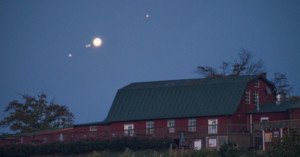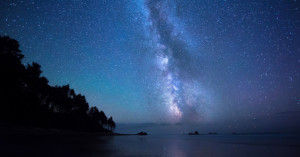
Photographer Captures Jupiter and Its Moons Rising Above a Barn
Photographer Brennan Gilmore took advantage of Jupiter's closest position to Earth in the last 59 years and captured a photo of the gas giant along with its four Galilean moons over the roof of a barn.



